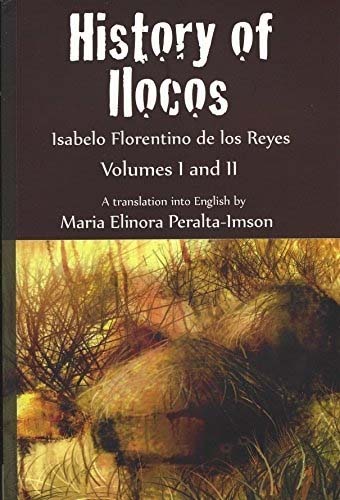First published in Tulay Fortnightly, Chinese-Filipino Digest 27, no. 6 (August 19-September 8, 2014): 5-6.
I was so happy and surprised to find a copy of History of Ilocos by Isabelo Florentino de los Reyes at a bookstore recently. Released this year by the UP Press, it is an English translation by Maria Elinora Peralta Imson, PhD, of the University of the Philippines-Baguio of De los Reyes’ original Spanish edition published in 1890.
De los Reyes (1864-1938) was the founder of the Philippine Independence Church and leader of the Union Obrera Democratic. He is also acknowledged as the Father of Philippine Folklore Studies.
Although I had read about De los Reyes and even bought a copy of the English edition of his famous El Folklore Filipino, published also by the UP Press, I didn’t know that he was also a historian until I came upon History of Ilocos.
Historia de Ilocos was first serialized in various newspapers and later published as a two-volume book in 1890. It won a gold medal at the Manila and Madrid expositions.
“…De los Reyes wrote from his knowledge and experience as an Ilocano to further knowledge about Philippine culture. He wanted Filipinos to know their cultural heritage, and to be proud of it,” according to the UP Press.

What excited and surprised me more was to discover that History of Ilocos does not only cover the history of Ilocos but also the history of the Philippines and even some accounts on the Chinese in the Philippines.
Section X in the chapter “Seventeenth Century” (vol. 2) includes a portion entitled “A Revolution and Its 50,000 Victims,” which is about the second uprising and subsequent massacre of the Chinese in the Philippines in 1639.
De los Reyes’ account of the incident provides vivid descriptions seldom found in other historical accounts. He wrote:
On Dec. 5, 1639, the central government of the Philippines in Manila sent an order to all the provinces to cut the throats of all their Chinese residents even if they were innocent. The Alcalde Mayor Pedro de Tursis of Ilocos obediently had the 100 Chinese living in his province decapitated.
The reason for such an extreme measure was the Chinese revolt in Laguna where the mutiny first started. Soon, the rebels were joined by their fellow Chinese in Batangas, Manila and Bulacan. It was feared that all the Chinese from the other provinces would do the same, given their well-known unity and their fear that all of them would be punished for the misdeeds of some.
Because of the above-mentioned order, 1,100 Chinese were decapitated in Cavite, 500 in Bulacan, 300 in Tondo, 200 in Laguna, 200 in Taal, 500 in Pangasinan and 1,800 in Pampanga. Almost none of them managed to escape in Pangasinan, Pampanga and Ilocos.
In spite of it all, the Chinese succeeded in raising an army of 50,000 or 60,000 and Manila could have fallen into their hands because our forces had been weakened by previous expeditions in Mindanao and Jolo, had they not received the timely help from the people in the provinces. The defense of the city of Manila was left to the clergy and the students when our small force went to fight the enemy.
It was estimated that 50,000 Chinese died, their corpses were used to fill in ravines on some occasion of great need. It seemed that every Chinese that died was replaced by 10 of them. The rotting corpses produced foul-smelling miasmas that lasted for months no one could drink the water from the rivers polluted by so many corpses.
The Chinese tried going to Pangasinan, Ilocos and Kagayan but Capt. Rodrigo de Mesa, who was leading a fleet of Pampangos, prevented them from crossing the Kingaa River and confiscated the many rafts they had prepared for the purpose.
However, I think the number of victims of the revolution and subsequent massacre cited by De los Reyes is too big at 50,000, quite different from the general accepted historical accounts of 23,000 to 25,000.





